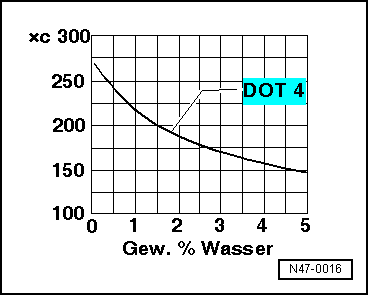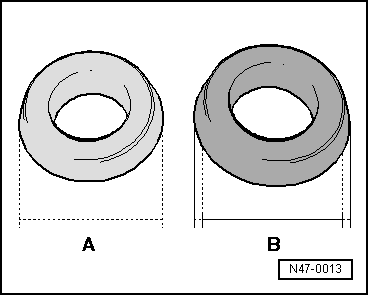| The boiling point decreases as the water content increases, which means a considerable rise in brake fluid temperature can lead to formation of vapour bubbles and brake failure. |
| The colour of the brake fluid becomes darker over the course of time. At the same time, a dark-coloured liquid must not mean that the quality is bad. The change in colour is due to chemical reactions and may happen after a short time (weeks), especially in the case of vehicles with ABS. |

WARNING | The rubber parts of the braking system (sleeves, seals) are not compatible with mineral oil, petrol or cleaning products. |
|
| Contact between such substances and a seal or sleeve, including in small quantities, will cause modifications to these parts and could negatively affect brake operation. The consequences of a contaminated brake system may only become apparent after some months, however this could imply considerable costs, above all for vehicles with ABS/ESP. |
|
|

|



